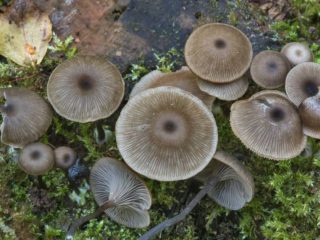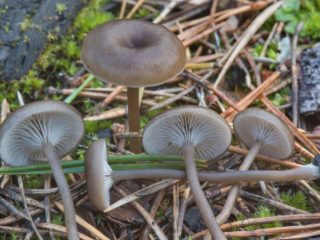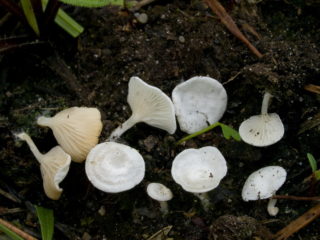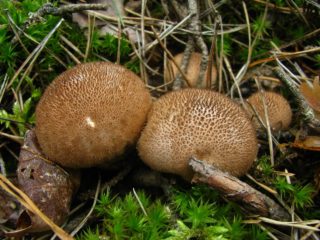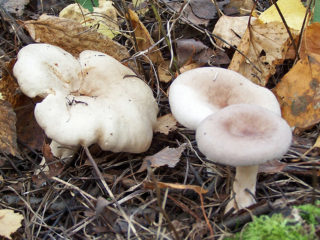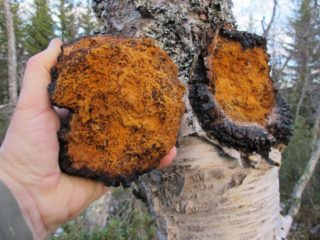Content
The Mitsenov family is represented by small mushrooms growing in noticeable groups. Omphalina bell-shaped is one of the representatives of this family with a typical appearance.
What does xeromphaline campaniform look like?
This species stands out with a leg height of up to 3.5 cm, a miniature hat, reaching a diameter of up to 2.5 cm.
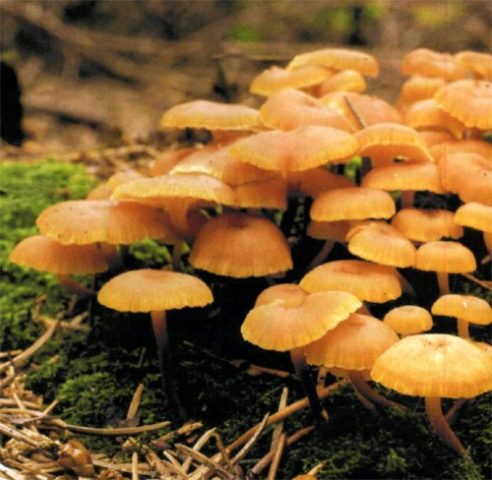
This mushroom grows in large colonies
Description of the hat
The size of the hat resembles a two-kopeck Soviet coin. It has the shape of an open bell with lines located along the radius, a characteristic dimple in the middle. Gradually, it straightens, the edges go down. The light brown surface of the omphaline is smooth, translucent. The plates on the inner side shine through it. Alternating partitions are located between them.
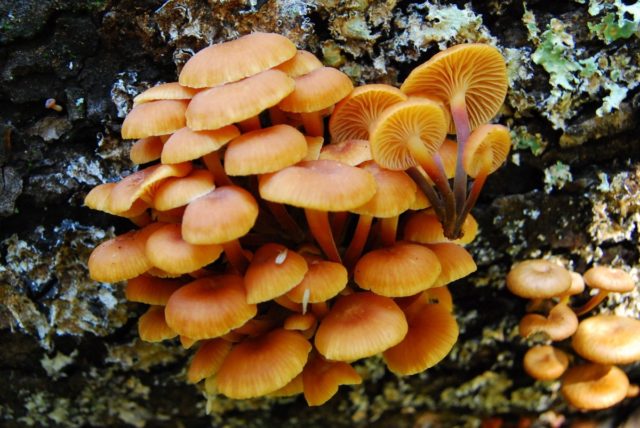
The hats become lighter towards the edges
Leg description
The leg is thin, up to 2 mm wide, expands upward, thickens closer to the mycelium. Its color is brown, ocher, dark brown to the base. The surface is covered with fine fibers.
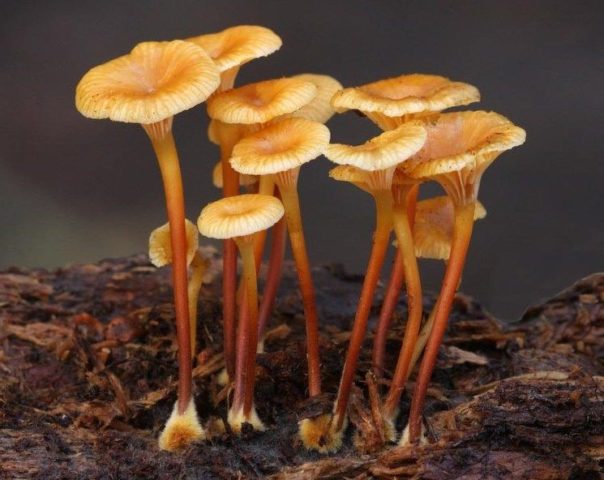
The legs are brittle, with a slight drooping at the base
Where and how it grows
Occurs in spring, summer and autumn in the temperate coniferous forests of Eurasia and North America. The mass appearance is noticed at the beginning of the mushroom season: in the absence of other mushrooms, they feel at ease on the stumps, they grow over the entire area of the wood.
Is the mushroom edible or not
There is no information about the edibility of the species. Thin pulp has no smell, mushroom taste.
Doubles and their differences
Miniature young omphalines bell-shaped can be confused with scattered dung beetle. But the latter retain a light brown, gray tint until the end of ripening. The hats are like bells. The pulp has no smell, taste.

Scattered dung, inedible
Xeromphaline Kaufman - a fragile, flexible fruiting body with a diameter of up to 2 cm. It grows in few colonies on stumps, decaying logs of deciduous species, spruce, pine, fir in forests of temperate latitudes. Inedible.

Kseromphalina Kaufman's leg is curving, thin, light brown in color
Conclusion
Omphaline bell-shaped is a miniature species that has no nutritional value. But this saprotroph is an important link in the ecological chain. It promotes the rapid decomposition of wood residues, their transformation into inorganic elements.

